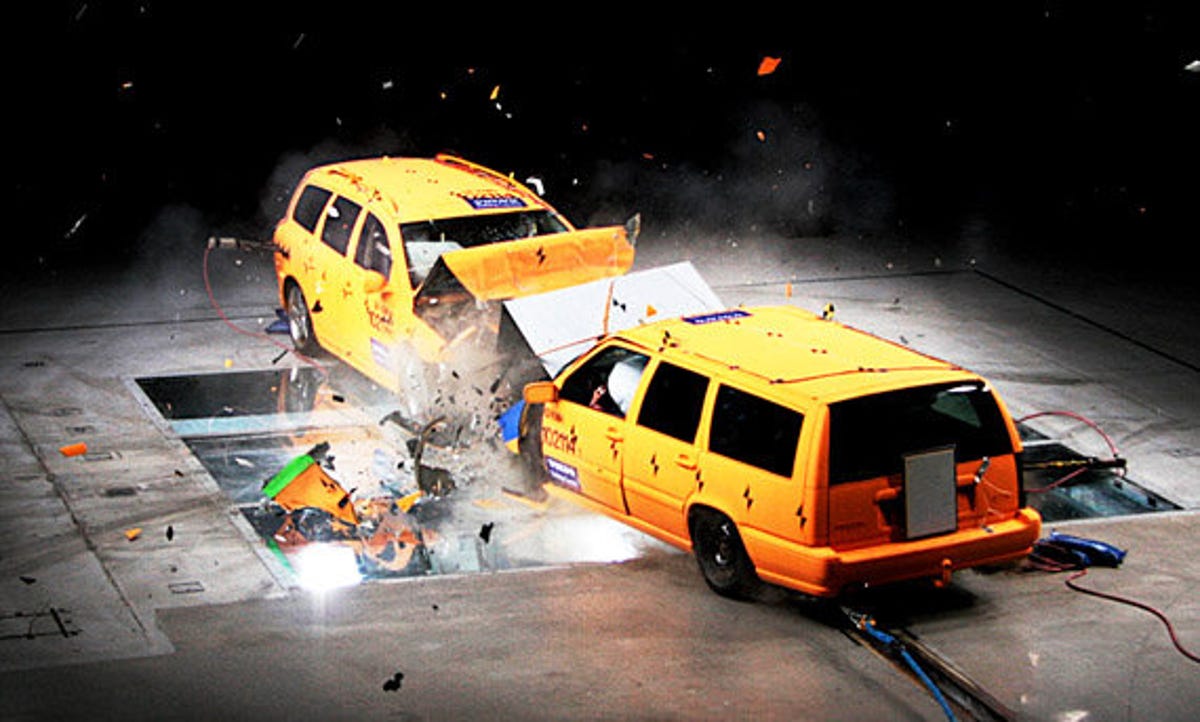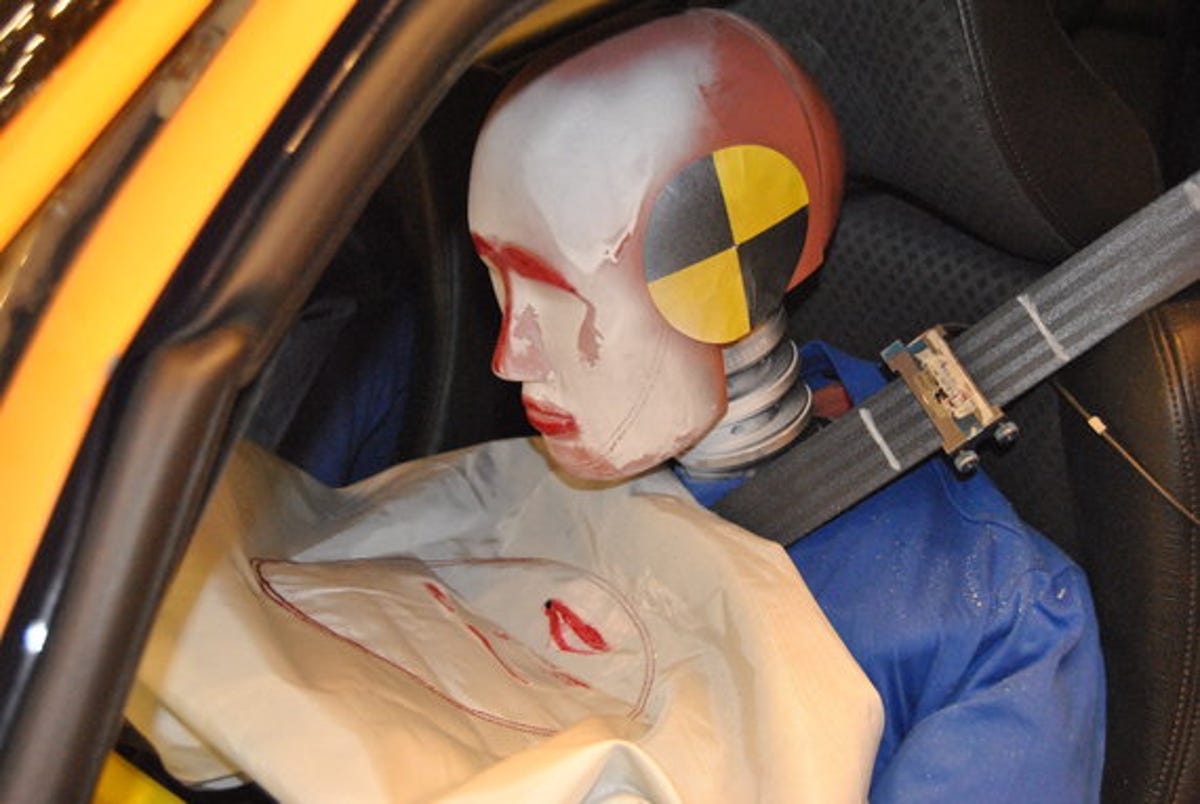Volvo Crash Test Lab photos: Crashing cars, saving lives
Volvo says that, by 2020, new technology will mean no-one should be killed or injured in one of its cars. We went along to its Crash Test Lab in Sweden to see how the company's getting along

Volvo has lofty ambitions. The Swedish automaker -- already renowned for its track record in automotive safety -- says that, by 2020, no-one should be killed or injured in one of its cars. Volvo also says it will create vehicles that simply will not crash, thanks to futuristic car technology.
Ironically, to get to that stage, Volvo must crash up to 400 cars per year at its Crash Test Lab, located in Gothenberg, Sweden. Inaugurated almost exactly ten years ago, in early 2000, the facility remains amongst the most advanced in the world, providing Volvo's engineers with the means to replicate just about any type of car accident that might occur in the real world.
One of the most impressive features on display during our visit was Volvo's new Pedestrian Detection System -- an update to the company's City Safety feature, available now in the Volvo XC60. A radar system mounted on the front grille, and a forward-facing video camera mounted just ahead of the rear-view mirror monitor the road ahead for vehicles and objects that look as if they might be people. On-board computers apply the brakes should you fail to react to their presence.
During a hands-on test with the system, we were asked to drive at 30km/h towards a dummy child -- a cute little fellow in a Volvo baseball cap -- while avoiding all temptation to apply the brakes. As we got to within about 15 feet, a red light flashed in our line of sight and an audible alert was sounded, warning us to take action. As agreed, we did nothing and, moments later, our XC60 test vehicle did the improbable -- it braked hard by itself, stopping the vehicle inches away from the child's face.
Needless to say, the system is hugely impressive and will save countless lives -- provided there are no technical glitches. In a second demonstration, the demons of live demonstration were on hand to haunt Volvo, as a prototype S60 failed to automatically brake when launched at a parked lorry. The company put this down to a problem with the test vehicle's electrical systems, which had been suffering problems throughout the day, and vowed that the cars that end up in customers' hands wouldn't suffer the same fate.
The Crash Test Lab's party piece is its central crash facility, which can collide two cars, head on, at a combined speed of up to 200km/h. Laser-guided cars drive autonomously towards each other inside two tunnels. One contains a fixed track measuring 154m in length, while another contains a 108m-long track that can be moved -- like the hand of a clock -- from 0 to 90 degrees, to create all manner of collision angles.
Volvo recreated a well-documented Swedish car accident in which a 1993 Volvo V70 travelling at 62km/h collided head-on with a 2009 V70 travelling at 58km/h. Test engineers seated crash-test dummies in both cars, rotated the swivelling tunnel to create the correct angle of impact, and sent both cars hurtling towards each other at the exact speeds of the vehicles in the original accident.
Remarkably, the dummies in both cars were said to have suffered comparable injuries to the humans they represented. All involved survived, but the father and son travelling in the older V70 had to be cut free by the emergency services, and were hospitalised with very serious injuries. The man, woman and child travelling in the newer V70 were also injured, but suffered less serious injuries and didn't need to be cut free.
As impressive and dramatic as the tests were, the most impressive aspect of all was how precisely Volvo could recreate and measure the effects of the accident. Using high-speed cameras positioned on the cars, around the test centre and even below the accident impact zone, Volvo was able to accurately visualise what happened, see which systems failed, if any, and analyse how the passengers were affected inside the vehicles' cabins.
Volvo says the recreation of such accidents isn't uncommon. Should any Volvo be involved in a crash in its Swedish homeland, a fast-response team of accident investigators visits the scene, recording measurements and readings from the cars, and taking them back to the Crash Test Lab for analysis, with a view to improving safety in the future and achieving zero fatalities or injuries in Volvo cars by 2020.
If its own records are to be believed, Volvo appears to be winning the casualty war, with the overall injury risk while driving a Volvo falling significantly over the years. According to the company's internal figures, the injury risk while driving a Volvo in the years 1967-74 stood at just above 10 per cent. Between 2000 and 2005, that injury risk stood at approximately 4 per cent, despite there being more cars on the road.
Volvo puts this down to its continuous safety innovations -- helped in no small part by its Crash Test Lab. Volvo's goals are ambitious, but we wish them luck.
To see more pictures of Volvo's Crash Test Lab, hit the 'Continue' link below. To learn more about its cars, head on over to its Web site.
